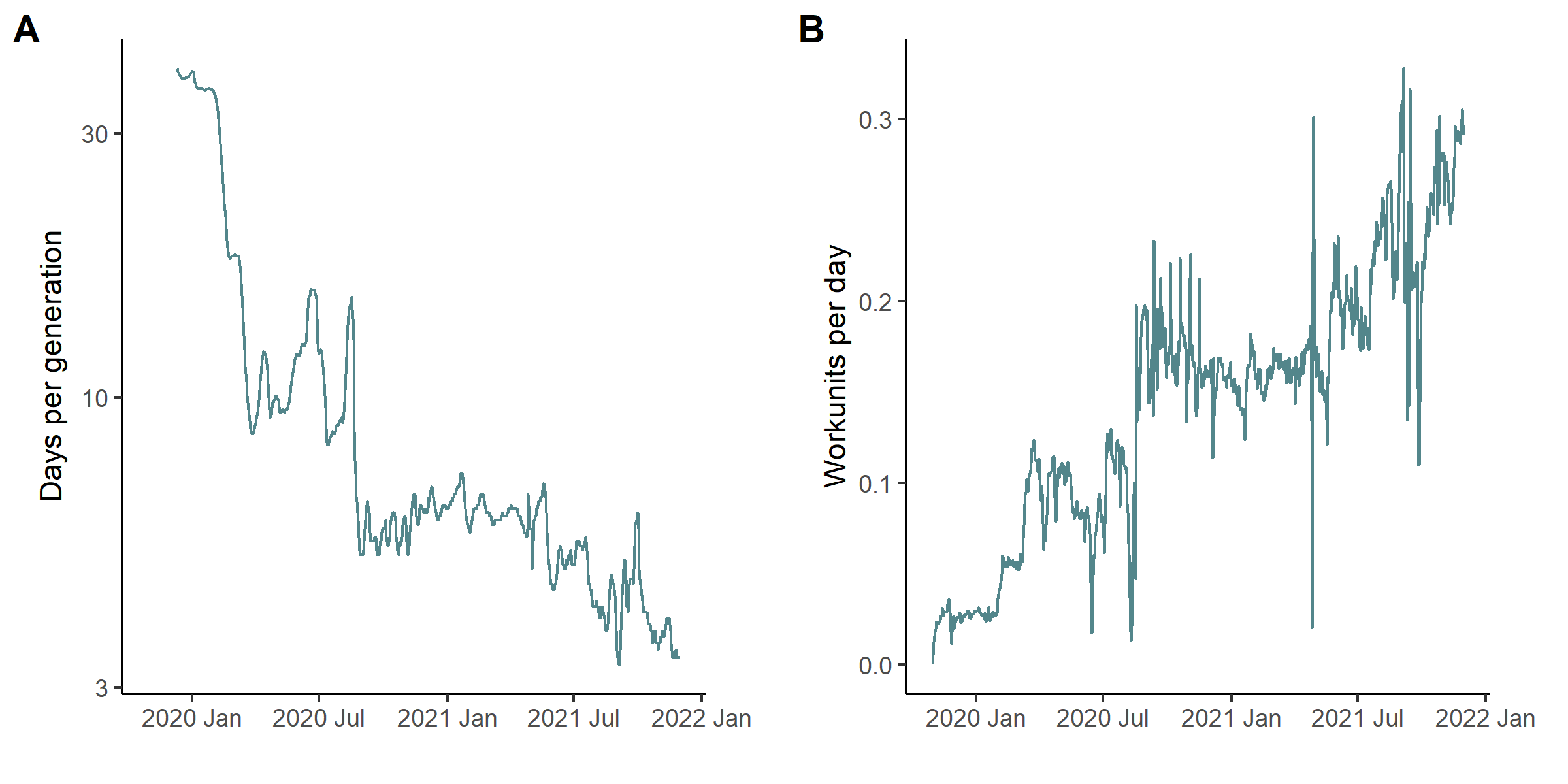The project's pace is at its fastest.
Background
Through the Africa Rainfall Project, researchers at Delft University of Technology are creating computer simulations of localized rainstorms in sub-Saharan Africa. Only by using World Community Grid can these simulations be run at a high level of resolution to provide more accurate forecasts for localized rainstorms. This has never been done before for rainstorms in this region, and is particularly important because 95% of agriculture in Africa depends on rainfall. In addition to data generated from World Community Grid, the project will use data from The Weather Company and other information to help provide more accurate rainfall forecasts. In turn, these improved forecasts could help farmers more successfully raise their crops.
The project's pace is 3.4 days per generation.
With the incredible support of many volunteers, Africa Rainfall Project has reached its fastest stable pace: 3.4 days per generation (as shown in Figure A). Accordingly, the number of work units completed per day is constantly increasing (Figure B). The speed has been increasing for the past few months, and the current estimated project end is September 2022.

Current status of work units
With the newer type of report for work units, the status for this project is:
- Leading generation: 119
- Average generation: 110.8
- Pace: Moving forward 1 generation every 3.4 days (based on the latest 14-day average)